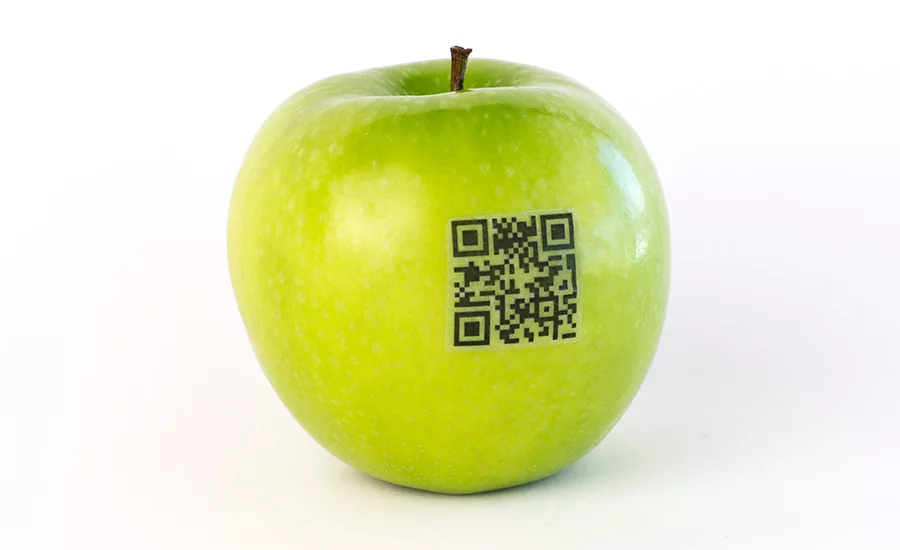FDA’s Focus on Food Traceability

According to the U.S. Centers for Disease Control and Prevention (CDC), approximately 48 million Americans—about one in six—get sick with a foodborne illness every year. Of that number, CDC estimates 128,000 end up hospitalized and 3,000 will die from a foodborne disease. Correspondingly, consumers rank safety higher than anything else (e.g., affordability, healthful eating) when selecting a restaurant. Consumers want—and need—to know more about their food.
It is not surprising, given this information, that improving food traceability is a key objective for the U.S. Food & Drug Administration (FDA). Food traceability is the ability to track any food through all stages of the supply chain—production, processing, distribution—to ensure food safety and operational efficiency. Over the past year, FDA has launched three major initiatives to create a safer and more traceable food supply chain.
New Era of Smarter Food Safety: Tech-Enabled Traceability
On July 13, 2020, FDA published the New Era of Smarter Food Safety Blueprint. This blueprint outlines the approach FDA will take to create a New Era of Smarter Food Safety that evolves along with food technologies and systems to positively impact the food industry and consumers alike.
According to FDA, “The New Era of Smarter Food Safety represents a new approach to food safety, leveraging technology and other tools to create a safer and more digital, traceable food system.” Correspondingly, the New Era is built on four core elements to support FDA’s ultimate goal of reducing foodborne illness. One of those elements is Tech-Enabled Traceability.
The objective of Tech-Enabled Traceability is to use technology to create food traceability advancements, including implementing rapid tracebacks, identifying specific sources, and helping quickly remove products from the marketplace when necessary. Beyond technology, part of this effort involves harmonizing efforts to follow food from farm to table by creating similar data standards across government and industry. Electronic data are being leveraged to trace the origin of contaminated food more quickly and accurately. Blueprint actions include:
- Developing foundational components
- Encouraging and incentivizing industry adoption of new technologies
- Leveraging the digital transformation
Proposed Food Traceability Rule
FDA published its proposed Food Traceability rule on September 23, 2020, as required under the Food Safety Modernization Act Section 204(d). While FDA has had food traceability requirements, the proposed update is intended to enhance traceability recordkeeping for certain identified foods beyond a limited “one-up, one-back” traceback approach.
Looking for quick answers on food safety topics?
Try Ask FSM, our new smart AI search tool.
Ask FSM →
This approach is based on a series of pilot projects conducted by the Institute of Food Technologists focused on how new traceability regulations would affect businesses, particularly small businesses. The pilots were able to show how outbreak investigations can be more effective and actually simplified when extended traceback data for every step in the supply chain are provided.
Key components of the proposed Food Traceability rule include the following:
- The Food Traceability List (FTL): The FTL designates categories of high-risk foods that require additional recordkeeping to protect public health. FDA created a risk-ranking model to identify the following high-risk foods for inclusion on the FTL: cheeses, shell eggs, nut butter, cucumbers, fresh herbs, leafy greens, melons, peppers, sprouts, tomatoes, tropical tree fruits, fruits and vegetables (fresh cut), finfish, crustaceans, mollusks/bivalves, and ready-to-eat deli salads. The proposed rule establishes a process for FDA to update the FTL. Additions become effective one year after publication in the Federal Register; deletions would become effective immediately.
- Traceability Lot Code: The traceability lot code is to be established by entities that originate, transform, or create food on the FTL. This identifier remains the same as the product moves through the supply chain unless a transformation of the food occurs. The objective is to create linkages throughout the supply chain and help FDA address key points in the supply chain more quickly in the event of an outbreak.
- Critical Tracking Events (CTEs) and Key Data Elements (KDEs): The proposed rule requires tracking KDEs for five defined CTEs: growing, receiving, transforming, creating, and shipping. At each CTE, the responsible entity would need to record the traceability lot code and relevant KDEs specific to that activity.
- Recordkeeping: Any entity that engages in production of a food on the FTL must create and maintain traceability program records, including a description of relevant reference records, list of foods on the FTL that are shipped, description of how traceability lot codes are assigned, and any other information needed to understand data. Records must be maintained as either original paper records, electronic records, or true copies. An electronic sortable spreadsheet must be provided to FDA within 24 hours during an outbreak, recall, or other threat to public health.
The proposed rule contains several exemptions and partial exemptions. Some of these include excluding produce that is rarely consumed raw, certain farms and small originators, farms that sell directly to consumers, certain food produced and packaged on farms, small retail food establishments, and others.
The final rule must be submitted by November 7, 2022, and would become effective 60 days after it is published in the Federal Register. The compliance date for all entities subject to recordkeeping requirements would be two years after the effective date of the final regulation.
Traceability Tools Challenge
To further encourage the development of low- to no-cost, tech-enabled traceability tools, FDA recently launched a public challenge that runs from June 1 through July 30, 2021. This challenge is asking for people to submit digital food traceability solutions that “utilize economic models that are affordable, with costs that are proportional to the benefits received and can scale to encourage widespread adoption.”
The goal of this challenge is to provide identify solutions and cost-effective technology solutions for food producers of all sizes to help speed FDA’s response to foodborne illness outbreaks. As FDA states, “Over time, the long-term returns in digitization can contribute to an ideal future state of automated, tech-enabled traceability.”
Benefits
The food system and supply chains continue to change and evolve at an accelerated pace. That introduces new risks and challenges, including foodborne illness outbreaks. What worked previously to manage food traceability needs to evolve, as well. There is a real need for standardization, stronger linkages throughout the supply chain, improved communication and recordkeeping, and faster response.
New regulations and a focus on technology are helping FDA address these food supply chain risks and create solutions that will:
- Create standardization and harmonization across industry approaches.
- Reduce response time in a foodborne illness outbreak and, subsequently, the number of people impacted.
- Limit the overall scope of recalls.
- Improve communication through greater transparency throughout the supply chain.
- Eventually create end-to-end traceability.
Roberto Bellavia, M.Sc., is a principal and senior consultant at Kestrel Tellevate LLC, where he manages food safety-related projects and supports clients of all sizes in developing and implementing GFSI schemes, complying with regulatory requirements, and creating supply chain management programs. Roberto leverages is nearly 20 years of food quality experience to provide food safety training for companies and organizations. He has a master’s degree in Animal Production Science from the University of Camerino in Italy.








